A google search for Mekong Vietnam Restaurant may return names in particular, but the area is so much more than just that. The Mekong Delta offers various food experiences beyond individual listings. Exploring the diverse mekong delta food scene is a must. This guide details different eating styles: riverside, garden eating, locals, street food, and cafes (Information top April 2025)” OK, let us embark on this journey of culinary experience.
Distinct Riverside Dining Experiences
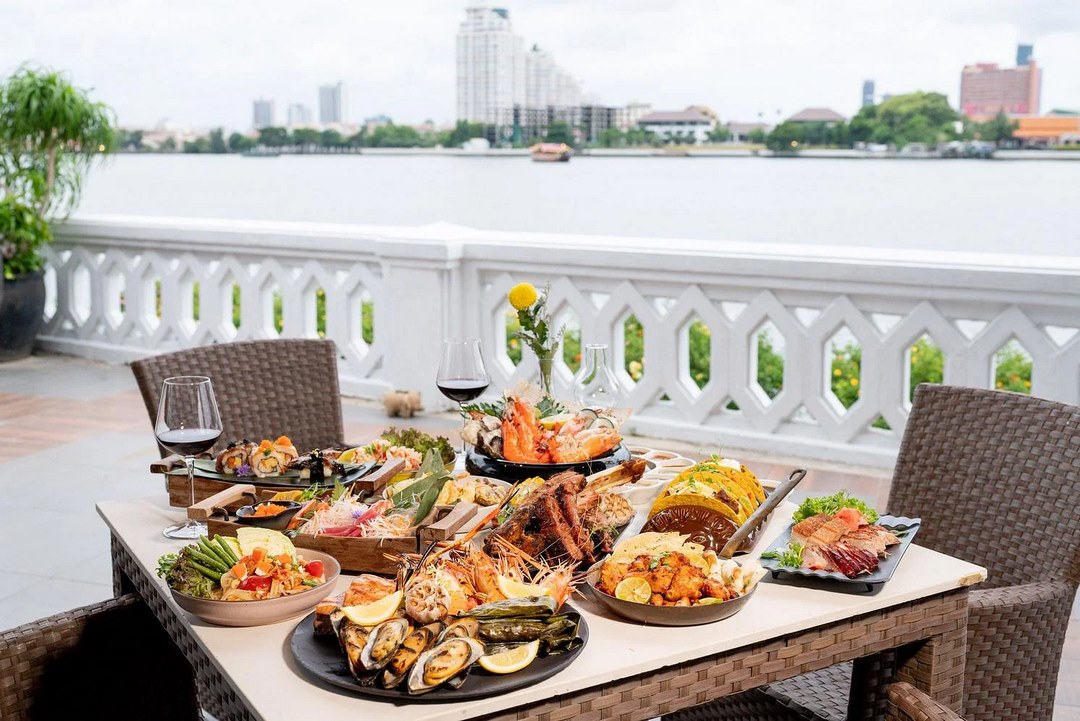
Eating by the water is a different experience than a Mekong Vietnam Restaurant in a city. This experience is something quite different as you very often find yourself dining next to the vast Tien River, Hau River, or the calmer smaller canals.
- Setting and Atmosphere: Many venues cash in on their location, with open-air seating areas or large windows overlooking the river or canal. You can often sense a cool breeze off the water. Part of the experience is watching various boats go by from small sampans to larger cargo vessels. In this setting, your meal is tethered literally to the region’s riverine lifeblood.
- Range of Riverside Venues: Riverside dining units are available to suit a variety of pocket books and tastes:
- Simple Local Eateries (Quán ăn): You will see basic and usually family-run establishments very close to the water serving local dishes for a little penny.
- Mid-Range Restaurants: Many of these have terraces, balconies, or separate riverside seating areas. They provide greater comfort and perhaps better views, as well as a selection from varied menus.
- Restaurants at Resorts: More upscale resorts located on the riverbanks will almost always have restaurants on-site to capitalize on the location, offering more refined service and a variety of menu options at higher price points.
- Cafes: It is also common to see a relaxed riverside cafe mekong delta. Here are good places for coffee, fresh juices or light snacks, along with views.
- Typical Food: Menus at these spots often highlight fresh ingredients from the river and surrounding gardens. Common dishes include local freshwater fish (grilled, steamed, fried, or cooked in hotpot) and river prawns. Other common selections are different types of Vietnamese hotpot (lẩu) and fresh salads with local herbs.
- Ideal For: A leisurely lunch or dinner. It’s best for travelers who want to relax, take in the scenery (sunsets over the river can be lovely) and experience the particular atmosphere of the waterways of the Mekong Delta. Sometimes, the atmosphere improves a meal, offering more than a typical Mekong Vietnam Restaurant.
This riverside eatery gives you a chance to enjoy the close relationship between the Delta’s food and its most defining waterways.
Peaceful Garden Settings Orchard And Eco Eateries
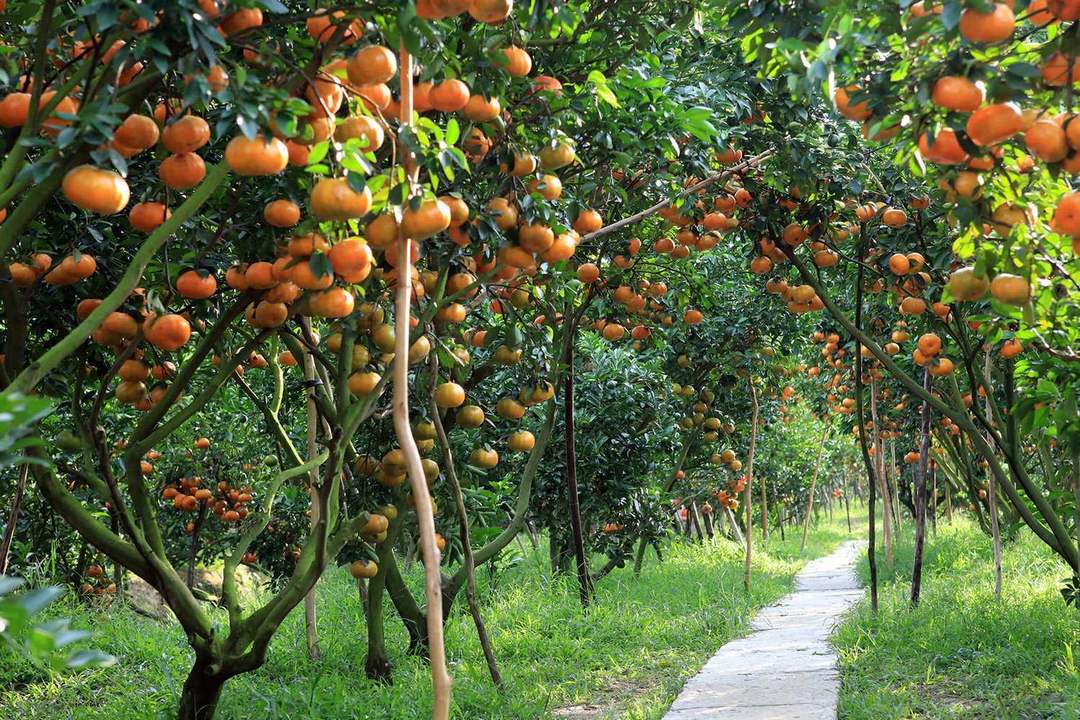
Another popular dining setup you get to find other than the usual Mekong Vietnam Restaurant inside city streets. Most restaurants in Mekong Delta serve organic food in green space, still a quite different ambiance.
- Atmosphere & Setup: These kinds of places are usually located right in fruit orchards or big, green gardens. Some are located in dedicated eco-tourism areas, others are affiliated with countryside farmstays. Ongoing throughout the general atmosphere usually quiet, relaxed and blended with nature. Seating can be in simple thatched-roof huts (chòi lá), open-air pavilions next to fish ponds or under shady trees.
- The Experience: Eating at such a place is a tranquil respite from the din and heat of towns or roads. It’s a chance to eat surrounded by plants and fresh air, and often less formal and more laid back. Wherever you are, you might be able to pair your meal with a short stroll through the fruit garden.
- Typical Food Focus: Petits plats at these garden eateries tend to focus on Vietnamese homestyle cooking (cơm quê) that features fresh, locally grown ingredients. Some of the more common dishes that are served here include grilled free-range chicken (gà nướng), locally caught freshwater fish (such as snakehead fish or climbing perch) cooked merely by way of grilling over embers (nướng trui) or braising in a claypot (kho tộ). Steamed or garden-fresh vegetables accompanied by flavorful dips (such as fermented fish paste, or kho quẹt) are also staples, as are platters of fresh fruit. It’s rustic, natural, and often bears little resemblance to the menu at a typical city-based Mekong Vietnam Restaurant.
This is so you can taste real traditional local flavors in a peaceful green environment.
Fishing Restaurants A Fun Experience

A different kind of restaurant, different from a regular Mekong Vietnam Restaurant, where you eat food and also do recreational fishing. These locations are popular local getaways.
- The Idea: These places are usually built around artificial fish ponds or small lakes. These waters are filled with common fish like tilapia or catfish. Basic fishing rods and bait (often for a small fee or included in food orders) are typically provided to guests. You will have the time to fish at your pace.
- The experience: The primary pastime is casual fishing in a leisurely environment, usually from small huts or platforms constructed on or near the water. If you do catch the fish, the restaurant staff would weigh it and cook it based on your liking (grilled, fried, hotpot, etc), and charge you for the fish weight and for the cooking service. While this is a popular dish to share among families and groups on weekend, it provides an interactive and engaging dining experience.
- Food offerings: In addition to the fish you catch, the restaurants will typically have a menu of other Vietnamese countryside dishes. Don’t expect garden-eatery items like grilled meats, simple vegetable dishes and rice.
- Typical Locations: You usually encounter fishing restaurants located in suburban or peri-urban areas or within larger eco-tourism parks, not in the midst of large urban centers. They have to be transported to a certain place where they go to.
This is a delightful option for a regular Mekong Vietnam Restaurant dining outing, mixing a meal with a leisurely activity.
Traditional Flavors And Family Run Eateries
Finding actual local, often family-run eateries, beyond specific settings whether riverside or garden, is what proves essential to experiencing real Mekong Vietnam Restaurant culture. This where you feel the center of vietnamese food mekong delta.
Characteristics
- Atmosphere: These restaurants are often plain and unpretentious in their decor. You may find these often tucked away on side streets or incorporated into residential neighborhoods, rather than right off the main tourist thoroughfare.
- Operation: Many are family operations that sometimes pass down through generations. Recipes are sometimes closely held family traditions (gia truyền). The emphasis is almost always on food quality and preserving local flavours. This are places where you will see the real Mekong Vietnam Restaurant thing.
Best Place for Specialty Dishes

The best Mekong Delta food is usually found at these local eateries. Most focus on traditional methods preparing regional mekong delta specialties.
These dishes below are often best experienced at such dedicated local spots, if you ask what to eat in mekong delta:
- Lẩu Mắm (Fermented Fish Hotpot): An iconic dish, infamous for its pungent broth, filled with the taste of fermented fish. It’s usually served boiling in a broth with additions like seafood, pork belly or eggplant and a large platter of fresh greens, herbs and banana blossom for dipping.
- Cá Lóc Nướng Trui (Grilled Snakehead Fish): A whole snakehead fish grilled over hay embers until cooked through, which keeps the flesh naturally sweet and moist. How It’s Eaten Flake the meat off and wrap it in rice paper, along with different fresh herbs and vegetables, and dip in sauce.
- Bún Mắm (Fermented Fish Noodle Soup), one of the same broth bases as lẩu mắm, just served over rice vermicelli noodles, with shrimp, squid, pork, and eggplant and a necessary plate of fresh herbs.
- Hủ Tiếu: Dumpling noodle soup (made from tapioca flour)Popular in southern Vietnam, often confused with my quang.
- Bánh xèo (crispy pancakes): the large, crispy southern Vietnamese versions filled with pork, shrimp and bean sprouts.
- Cá Kho Tộ (Fish Braised in Claypot): Usually a catfish or snakehead fish slowly simmered in a claypot with a caramelized fish-sauce base until tender.
- Flood Season Dishes: Consider seasonal ingredients such as small cá linh fish or bông điên điển flowers (roughly Sep-Nov) This is not your typical Mekong Vietnam Restaurant.
Finding Pho Bo Ga Mekong Vietnam (Finding Pho)
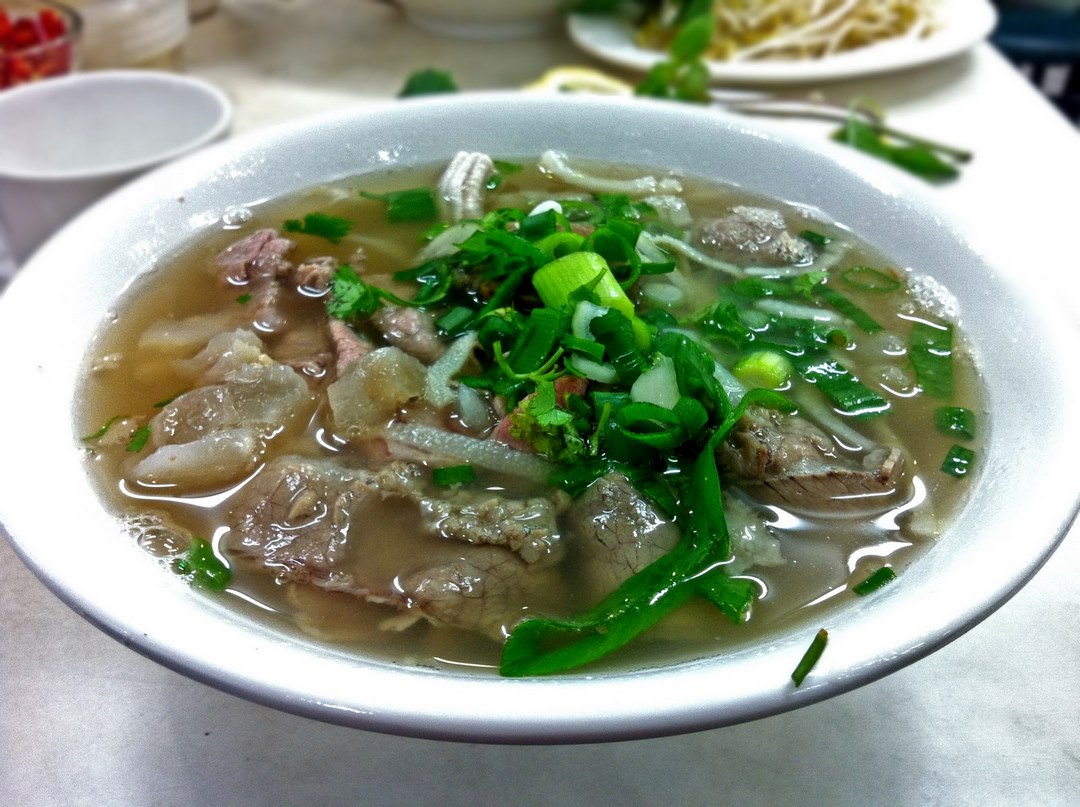
Online searches for pho bo ga Mekong Vietnam can lead visitors to confusing references, and the food in Vietnam can look quite different.
- Pho is widespread: There is no shortage of Pho noodle soup (beef – Phở Bò and chicken – Phở Gà) around Mekong Delta cities and towns. It is a very popular breakfast dish for the locals.
- Where to eat: At local eateries or simple restaurants or at street food stalls that specifically use the word “Phở” in their signs. Asking locals for recommendations for a solid neighborhood pho spot (or your hotel staff, if you happen to be traveling) often does the trick. And it will be the real Vietnamese version, made here.
The Experience Value
- Taste: Offers the most genuine taste of local home-made dishes and specialities.
- Atmosphere: Generally casual, busy with locals, and provides a taste of daily life.
- Price: Usually the cheapest option, at least relative to tourist-oriented or hotel restaurants. This is different from just any Mekong Vietnam Restaurant.
How to Find These Places
- Ask Locals: Still the best way. Ask hotel staff, guides, drivers or a friendly shopkeeper for their local favorites for specific dishes.
- Explore: Wander a bit away from the tourist thoroughfares into residential areas or stroll around markets. Look where locals are going to eat, particularly if a spot is busy.
- Use Review Apps (with context): Review Foody. vn or Google Maps. Concentrate on reviews by locals (if you can identify them) or those directly speaking to authenticity of taste rather than simply high general ratings.
Looking for these hole-in-the-wall spots takes a little extra work but usually results in the best and truest eats.
Rustic Countryside Specialties Exploring Unique Dishes
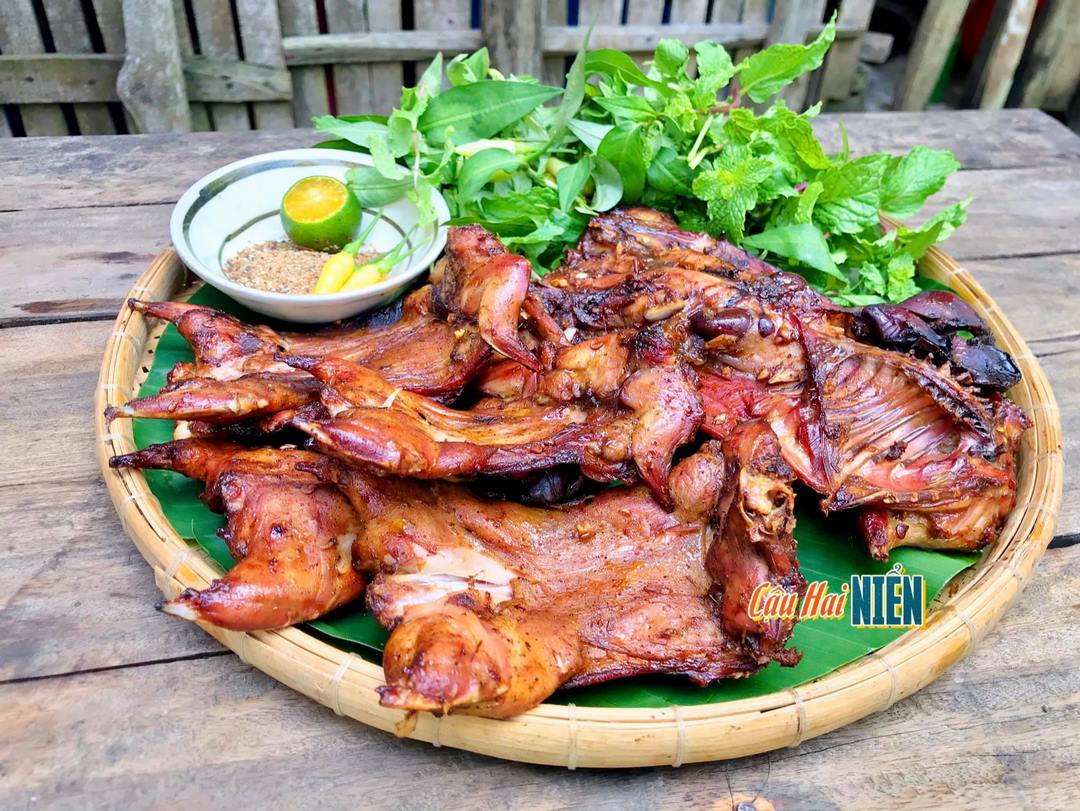
For adventurous eaters, mekong delta dining options are not limited to the common Mekong Vietnam Restaurant. The countryside offers some unique local crops and dishes.
- Where to Find It: These dishes are typically served at restaurants in rural areas, known as quán nhậu đồng quê, or at dedicated restaurants that advertise “ đặc sản đồng quê” (countryside specialties). You typically have to go further out from the main city centers to find these spots.
- Common Examples: Depending on the area and time of year, menus may highlight ingredients that are less frequently seen in mainstream restaurants:
- Field Rats (chuột đồng): More commonly grilled, roasted, or cooked with coconut milk. Regarded a local delicacy at some agrarian communities
- Rắn: The snake, which may be cooked as a stew, stir-fry or grilled.
- (món lươn): Usually in soup or hotpot, or stir fried with lemongrass and chili.
- Frogs (ếch): Typically fried, broiled, or used in curries or hotpots.
- Edible Insects: Certain insects (like crickets or beetle larvae), in some places, may be prepared (usually deep-fried) into a snack.
- The Experience: Sampling these dishes gives you a glimpse into the rural landscape of the Mekong Delta, its food sources and traditional ways of cooking. That makes its food much different than what you would find at your standard Mekong Vietnam Restaurant.
So, if you want to wander through the full range of what these regional cuisines have to offer, approach these specialties with curiosity and an open mind.
Exploring The Lively Street Food Scene
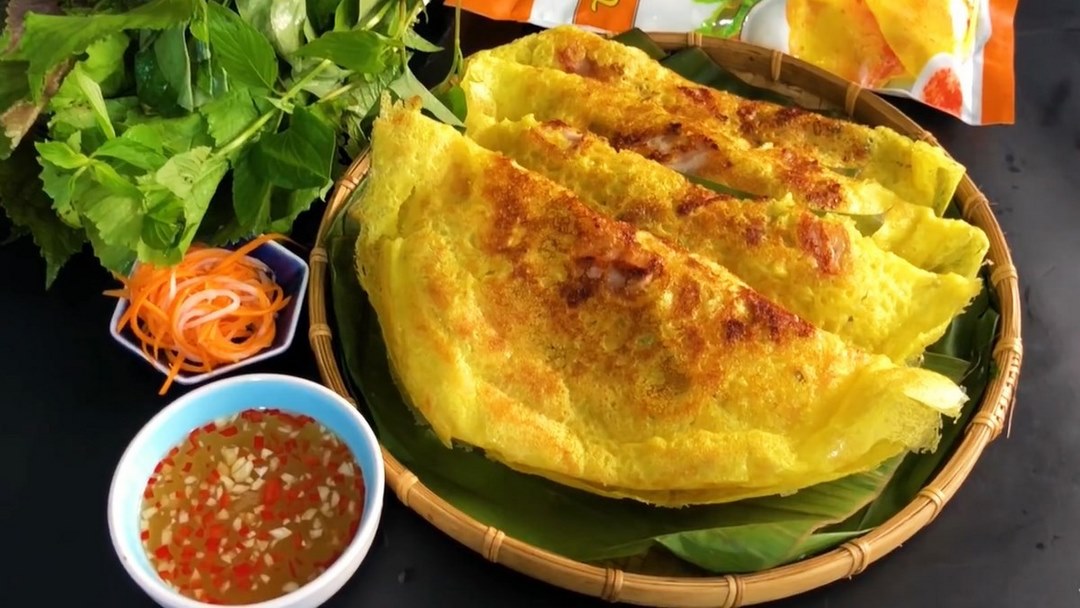
Mekong Delta street food adds another dimension to the area’s food scene. In addition to establishments like a typical Mekong Vietnam Restaurant, numerous vendors serve quick, cheap, and often surprisingly tasty local snacks and simple meals.
- Common Street Food Items: Look out for mobile carts or small street-side stalls serving up favorites like:
- Bánh Xèo: Small, individual-sized crispy pancakes (smaller than those served in restaurants)
- Bánh cống: Savory, deep-fried cakes of mung beans and shrimp, sometimes pork (a Soc Trang specialty commonly found in Can Tho and elsewhere).
- Bột Chiên: Fried pieces of rice flour cake, commonly with egg and papaya slaw.
- Gỏi Cuốn: Raw (unfried) spring roll with pork, shrimp, herbs, lettuce and rice vermicelli with a dipping sauce.
- Thịt Nướng / Nem Nướng: Grilled pork skewers or grilled pork meatballs, usually served with rice paper or noodles.
- Ốc: Species of freshwater snails boiled simply, usually with lemongrass, or stir-fried, most commonly with coconut milk or chili.
- Chè: A variety of Vietnamese sweet dessert soups that may include beans, jellies, fruits and coconut milk.
- Sinh Tố / Nước Ép: Made-to-order fresh fruit smoothies and juices.
- Nước Mía: Sweet, fresh-pressed sugarcane juice (sometimes flavored with calamansi or pineapple).
- Where to Grab Street Food: Vendors tend to gather around local markets (day and night). In the evenings, you’ll also see them on busy central streets, especially in Can Tho and My Tho. Places near schools or parks can work well, too. Street food is found at designated night markets in larger cities.
- The Experience: Visiting local street food vendors is usually fast, cheap and makes it easy to experience a wide range of flavors. It also plunges you right into local daily activity, delivering an atmosphere sometimes lacking with a formal Mekong Vietnam Restaurant.
Be bold and try all kinds of things from stalls that seem clean and are busy with local customers.
Mekong Delta Cafe Scene Relaxation And Coffee Culture

The Mekong Delta cafe scene is colorful and diverse, offering not just coffee but also a place to unwind while watching life unfold around you. It’s quite different from the focus at a typical Mekong Vietnam Restaurant. Coffee permeates Vietnamese daily life, and the Delta mirrors that.
- Local Coffee Culture: Cafes are bustling all day long. Morning hours for a pre-work coffee are a hit. Breaks and socializing are common in mid-afternoons. Cafes are crucial places where friends, family and casual business conversations take place.
- Cafe Styles: What You Might Find: You can expect a variety of common cafe styles:
- Sidewalk Cafes (Quán Cóc): Usually the most rudimentary, with small plastic stools on the side of the street. They brew robust, traditional Vietnamese drip coffee (cà phê phin) typically black (đen) or with sweetened condensed milk (sữa đá) at very cheap prices. Good for quick stops and people-watching.
- Cafe Sân Vườn (Garden Cafes): One of the most popular types of cafe in Vietnam, garden cafes provide outdoor seating in green environments and are often designed with greenery, trees and in some cases, water. They offer a cooler, quieter environment, removed from street noise.
- Riverside Cafes: Especially in towns that are on the Tien or Hau rivers such as My Tho or Can Tho you can often find a silent riverside cafe mekong delta. These take advantage of their location to provide soothing views of the water together with a drink.
- Modern or Styled Cafes: These are cafes that are more common in larger cities, particularly Can Tho, that have a more modern interior design, air conditioning, comfortable seating, and even Western coffee drinks deferring to espresso as well as local drinks.
- The Experience: Visiting a local cafe isn’t just about what’s in the cup. It’s a moment to pause, rest, watch the daily life flow by on the street or river and take in a local pastime widely popular.
A treat from mekong vietnam attractions – a stop at a cafe makes a nice break or accompaniment to an Mekong Vietnam Restaurant restaurant meal while exploring the Delta.
Higher End Dining at Hotels and Resorts
In higher-end hotels and especially resorts in the Mekong Delta, a specific Mekong Vietnam Restaurant setting is often a feature available on-site. This make it easier for guest which come to stay at the property
- Features: Restaurants that are located within 4-star, 5-star hotel or well-known resort typically serve a more formal dining atmosphere than local street side or garden restaurants. Their menus tend to be more expansive and varied, usually including Vietnamese specialties (sometimes with a modern twist) as well as recognizable Western dishes to please foreign visitors.
- Service and Price: Such establishments usually offer more attentive, professional table service. Similarly, the prices are quite a bit higher than you’ll pay at just about any of the local independent restaurants in the area.
- Suitability: Dining at your hotel or resort has its obvious conveniences, especially if you have been touring all day and want a nice sit-down meal for dinner. Also, if you specifically want a somewhat nicer setting, guaranteed air conditioning, or international food selection during your trip, it can be a good choice. Read more The experience is slightly different from the average local Mekong Vietnam Restaurant.
Refer to the individual hotel or resort’s site for restaurant menus, ambience and price levels.
Tips For Finding Good Places To Eat In The Mekong Delta
For great local food, maybe outside your calendar on the ăn uống café dated more toward the touristy restaurant, you often need to rely on local knowledge and clever searching techniques. Here are some tips to try during your visit:
- Know What You’re Looking For: The first, and perhaps most important, step is to have a general understanding of the experience you’re after. Looking for a particular specialty dish? Do you lean toward a particular vibe (casual street food, laid-back riverside, local spot, lively local eatery)? How much are you looking to spend on the meal? A clear understanding of this helps you direct your efforts.
- Ask local people for recommendations: This is probably the best source for authentic recommendations. Feel free to ask staff at your hotel or homestay, your tour guide (if one is available) or even friendly local shopkeepers or drivers for their favorite nearby places to eat certain dishes.
- Utilize review apps & websites critically: Various popular apps exist in Vietnam for food listings and comments. Foody. vn is a common local resource. There are lots of listings with user reviews and photos on Google Maps and TripAdvisor, too. If you are there, pay close attention to more recent comments about specific can tho restaurants. My reviews of tho restaurants and eateries in other Delta towns can guide you, too. This research might point you towards establishments considered the best type of Mekong Vietnam Restaurant, but remember to weigh these findings against recent customer feedback – preferably detailed reviews, not just star ratings.
- Explore Off of the Main Tourist Streets: Some of the cheapest and most authentic food are just a few blocks away from the main tourist streets or main roads. Stroll along side streets or wander near local markets. Look where locals are eating busy places that are popular with residents are often a good sign.
- Past Basic Hygiene: The activity is important ahead of road dinners or incredibly simple nearby eateries (quán bình dân), you should learn well by checking eye cleanliness of delays, cooking items, utensils, sitting tight before requesting. Pick places that seem well cared for.
- Know Local Specialties You Want to Sample: Doing some homework beforehand about some key Mekong Delta dishes (like those you’ll find listed earlier in this guide) helps you to seek them out on menus or to ask locals where to find the best versions.
With some easy steps, you can greatly increase the possibilities of your search for a satisfying meal extending well past a Mekong Vietnam Restaurant.
Conclusion Your Culinary Journey in the Mekong Delta
Visitors to the Mekong Delta enjoy a rich and colorful culinary palette. It goes a long way beyond whatever restaurant name you might initially enter into an online search. The way food is consumed here goes hand in hand: Whether you want casual street food, proper meals near the river or in the terrace gardens, food, so to speak, is integrated with the habitat you live in.
One of the most immediate ways to connect with the place and its people is through the region’s own distinguished tabloid of dishes spicy hotpots, fresh river fish, rare herbs and vegetables, sweet tropical fruits. Be open to trying new things. This guide provides tips for sorting through your options. Preadvise off the beaten track tourisme gewend. Finding your own favorite local places and flavors can be immensely rewarding. This process is frequently more gratifying than only looking up a mekong vietnam eating venue name you located on the web. Whether you’re cooking your way through the Mekong Delta or dining at a great Mekong Vietnam Restaurant, happy culinary adventures!
